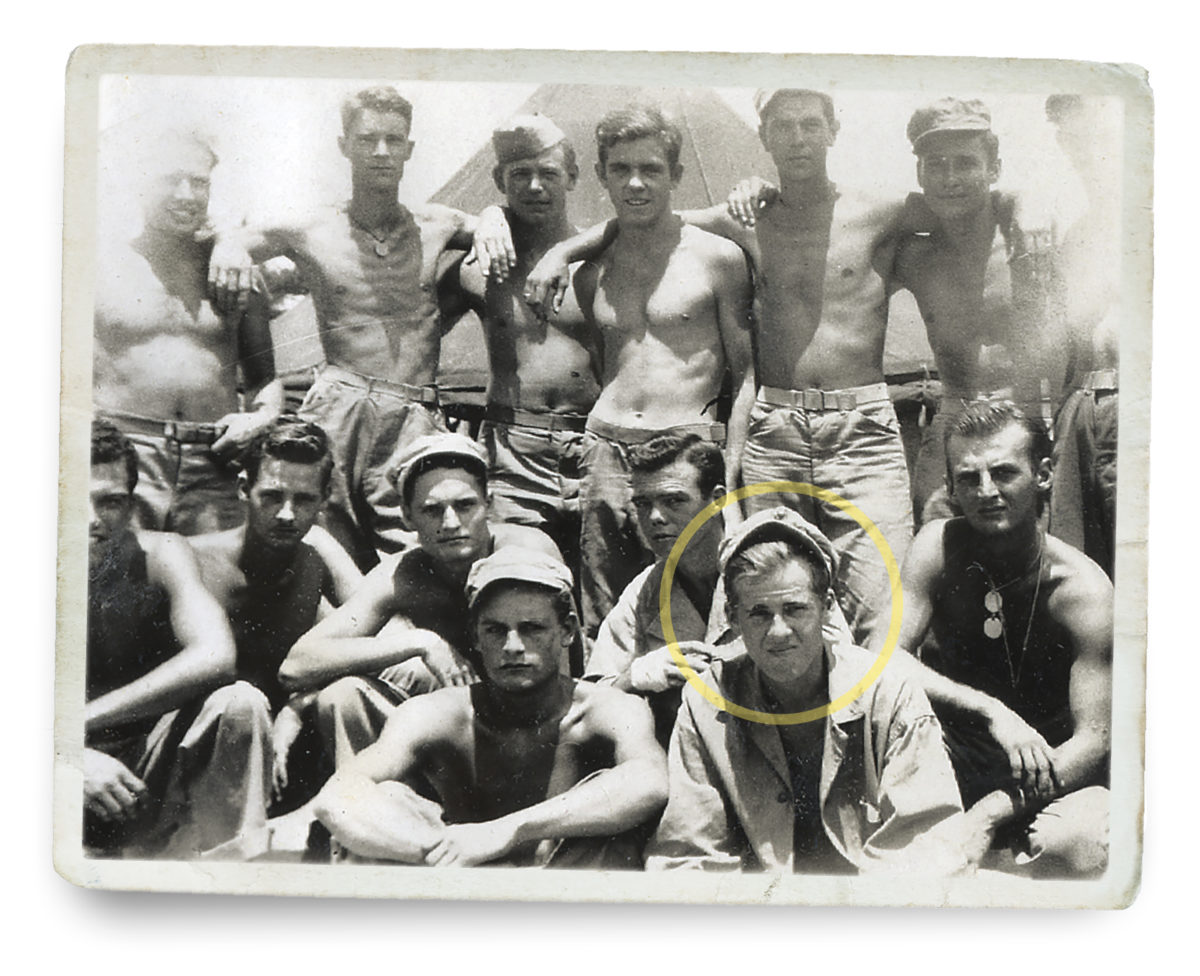“Tme had no meaning; life had no meaning,” Eugene B. Sledge wrote in his 1981 masterwork, With the Old Breed, describing some of the brutal, dehumanizing fighting he and others faced in the Pacific at Peleliu in late 1944 and at Okinawa in spring 1945. “We existed in an environment totally incomprehensible to men behind the lines.”
His book was an effort decades after the war to make the incomprehensible comprehensible, first to his family and then—at the urging of his wife, Jeanne, who typed the manuscript—to the greater public, which led to its publication. The resulting work was swiftly recognized as a classic. British military historian John Keegan described himself as “haunted” by the book, which he called “one of the most arresting documents in war literature.” Historian and World War II veteran Paul Fussell termed it “one of the finest memoirs to emerge from any war.” Documentarian Ken Burns drew on it for his 2007 film, The War, and it was an inspiration for the 2010 HBO miniseries The Pacific, with actor Joseph Mazzello playing Sledge.
Yet for most of his life, Sledge—who died in 2001—was known not as a combat Marine but as a quiet and thoughtful family man, a lover of nature and music who taught biology at Alabama’s University of Montevallo. “My Pacific war experiences have haunted me, and it has been a burden to retain this story,” Sledge explained in the book’s preface. “But time heals, and the nightmares no longer wake me in a cold sweat with a pounding heart and racing pulse. Now I can write this story, painful though it is to do so.” On the following pages is a look at a rarely seen collection: Sledge’s personal artifacts from what he called the “abyss of war.”
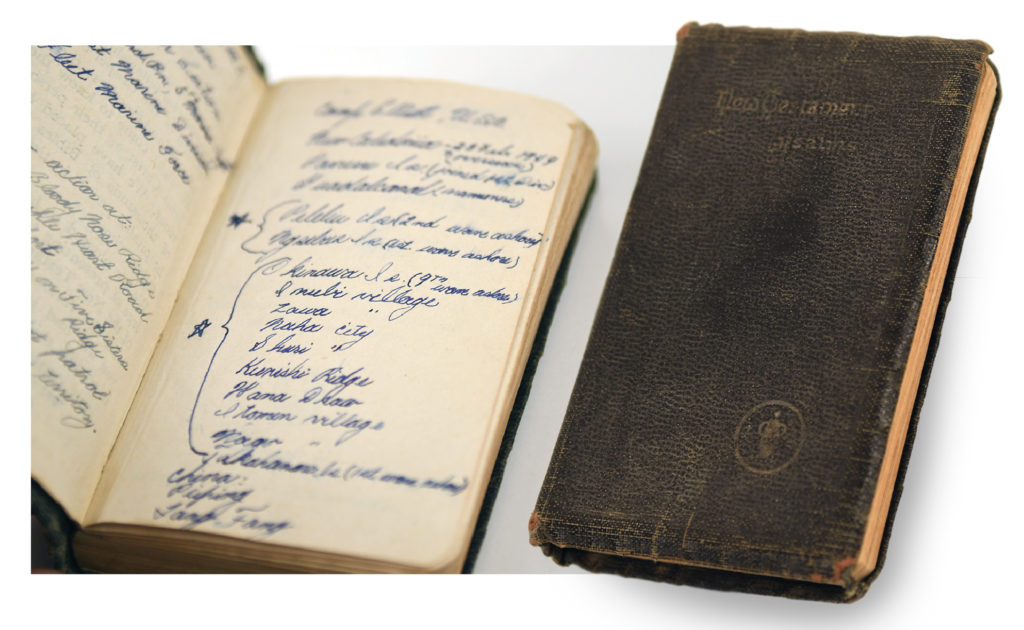
Since men in combat weren’t permitted to keep diaries for security reasons, Sledge jotted notes about his experiences at Peleliu and Okinawa in a pocket New Testament he had received during basic training at Camp Elliott, near San Diego. The notes would form the basis of his book With the Old Breed, which he started working on in 1944 while at rest camp on Pavuvu Island. He drew up an outline shortly after returning home, and completed the book in the late 1970s. (Courtesy of an anonymous collector; photos by Beth Black Photography)
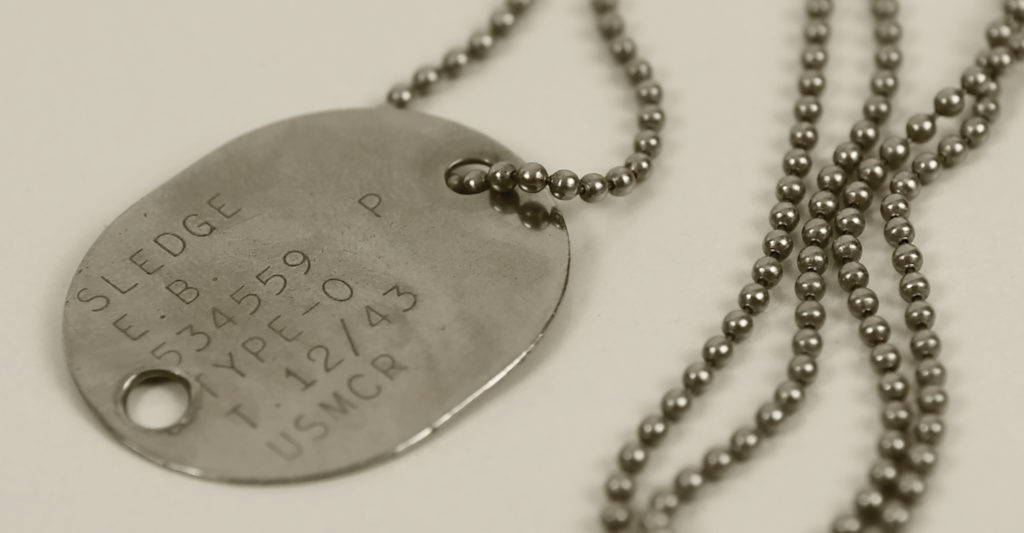
ID CHECK
Sledge’s dog tag. When he asked a recruiting sergeant why he had inquired about any scars, birthmarks, or unusual features, the man told him: “So they can identify you on some Pacific beach after the Japs blast off your dog tags.” Added Sledge: “This was my introduction to the stark realism that characterized the Marine Corps I later came to know.” (Courtesy of an anonymous collector; photos by Beth Black Photography)
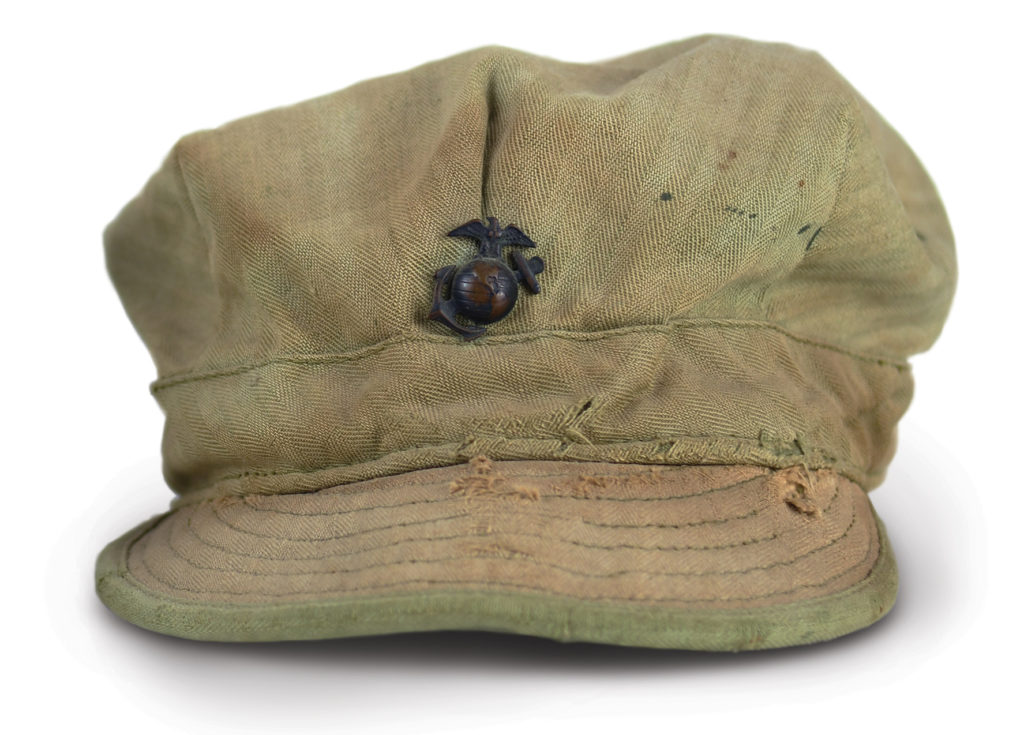
Marked with the Marines’ “Eagle, Globe, and Anchor” insignia, this utility cover (visible in the lead photo) accompanied Sledge throughout the war—and on yardwork projects at home in the years after. (Courtesy of an anonymous collector; photos by Beth Black Photography)
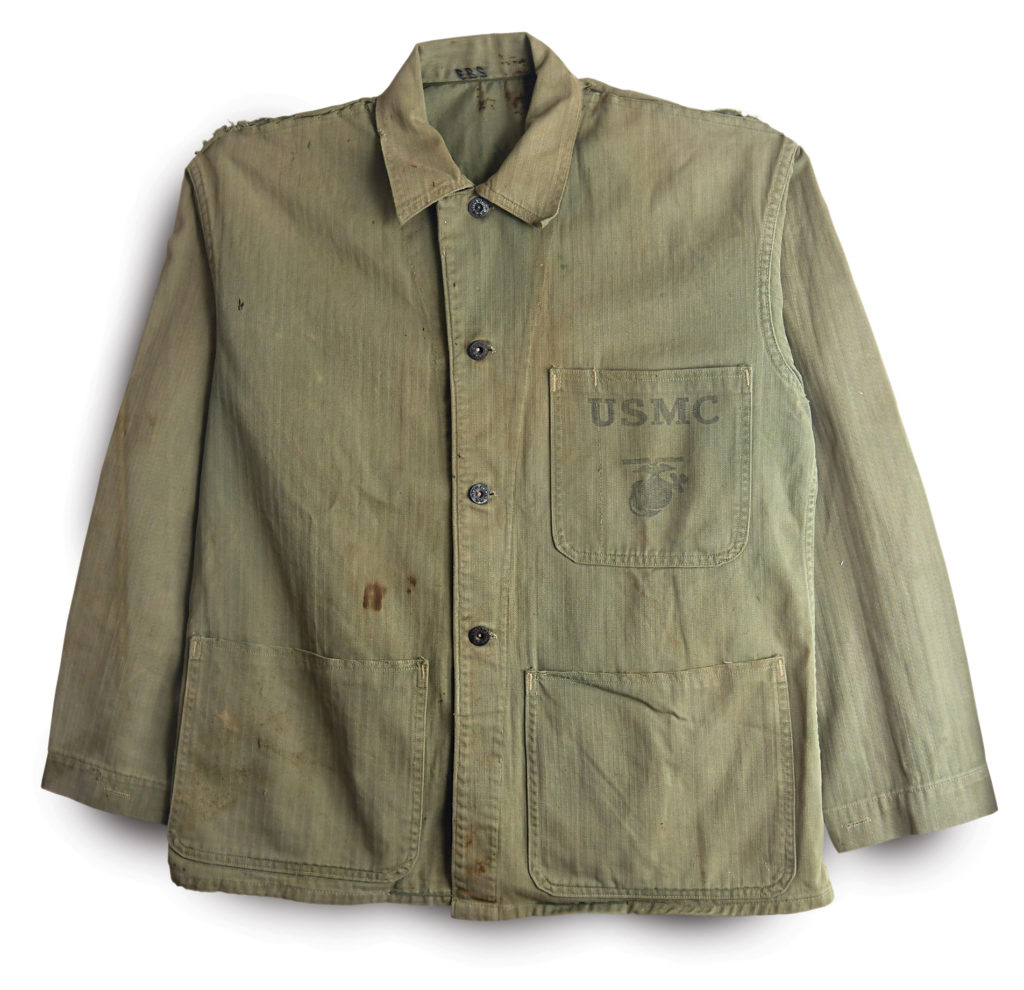
Durable and workmanlike by design, this herringbone twill jacket—with Sledge’s initials written inside the collar—was part of the Marines’ utility uniform. Sledge referred to it as his “dungaree” jacket—a common Marine term that neatly avoided the army’s nomenclature for similar apparel: “fatigues.” (Courtesy of an anonymous collector; photos by Beth Black Photography)
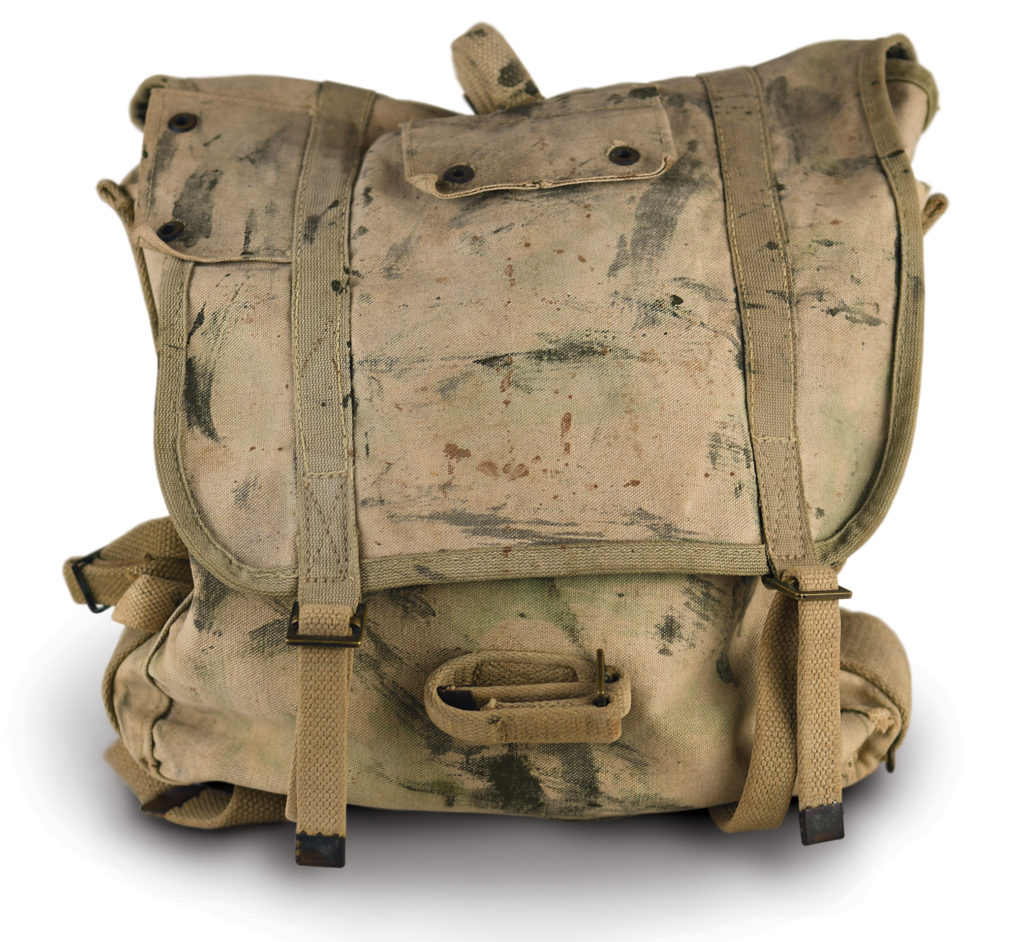
Sledge’s combat pack carried a pair of socks, K-rations, hand grenades, writing paper and a small bottle of ink, a toothbrush, family photos, and more. Coveting it in his childhood years, Sledge’s youngest son, Henry, asked if he could use it to carry his schoolbooks “because my friends would think it was cool.” Adds Henry: “As I recall, he smiled and said, ‘I don’t think so, Big Shot.’” (Courtesy of an anonymous collector; photos by Beth Black Photography)
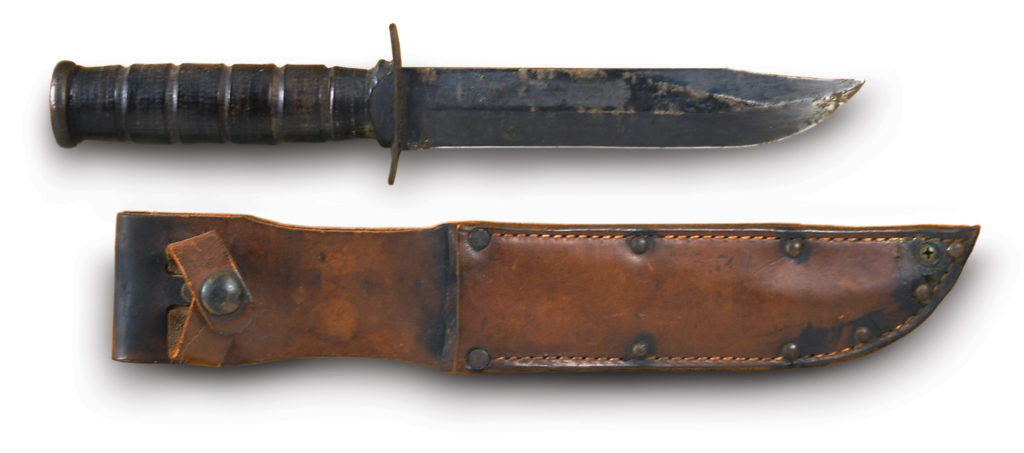
The Marines’ Ka-Bar fighting knife, which Sledge praised for its quality and balance, makes repeated appearances in his book. He remembers his drill instructor saying, “Sure, you’ll probably open more cans of C-rations than Japs with this knife, but if a Jap ever jumps in your hole, you’re better off with a Ka-Bar than any other knife. It’s the very best and it’s rugged, too.” (Courtesy of an anonymous collector; photos by Beth Black Photography)
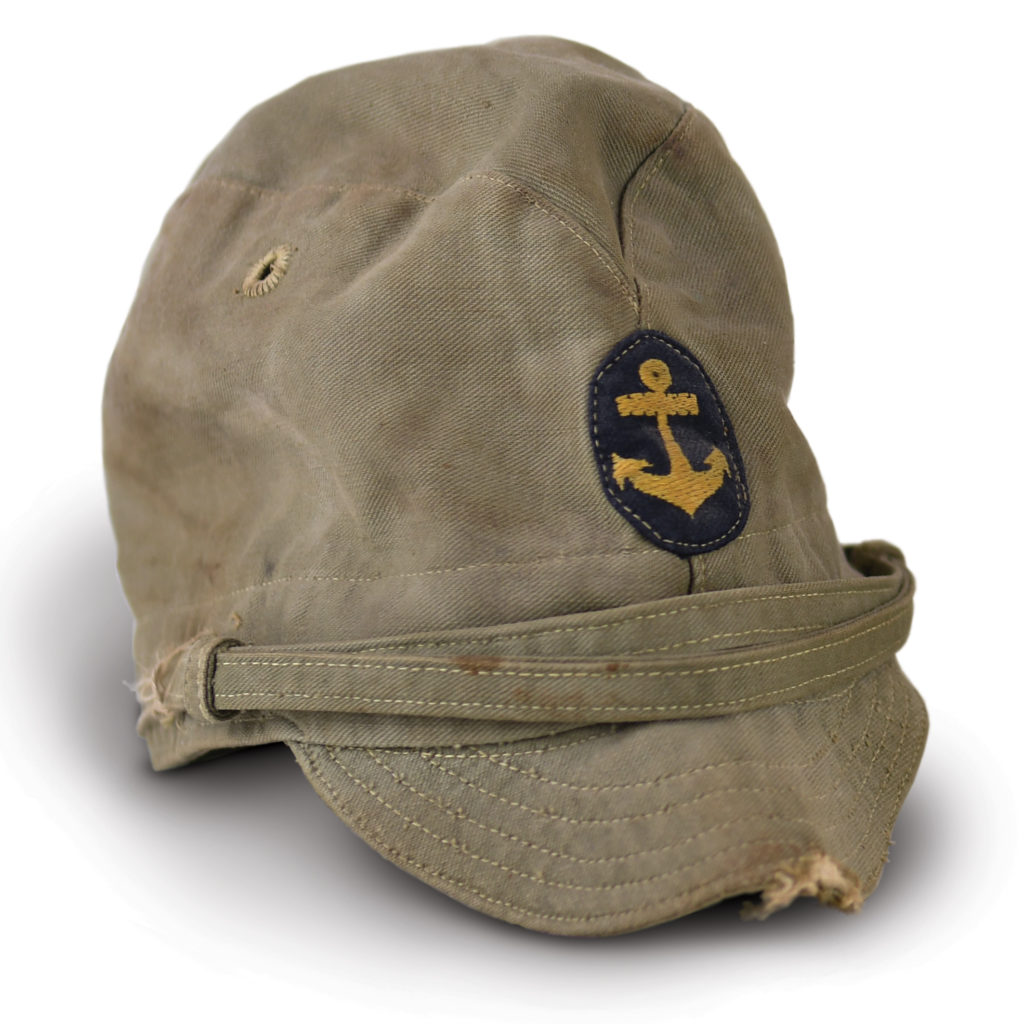
A cap that came ashore at Peleliu with an infantryman of the Japanese Naval Landing Forces went home with Sledge. Souvenirs from enemy dead were highly sought after, and during lulls in fighting, Marines and soldiers gathered them from the fallen. (Courtesy of an anonymous collector; photos by Beth Black Photography)
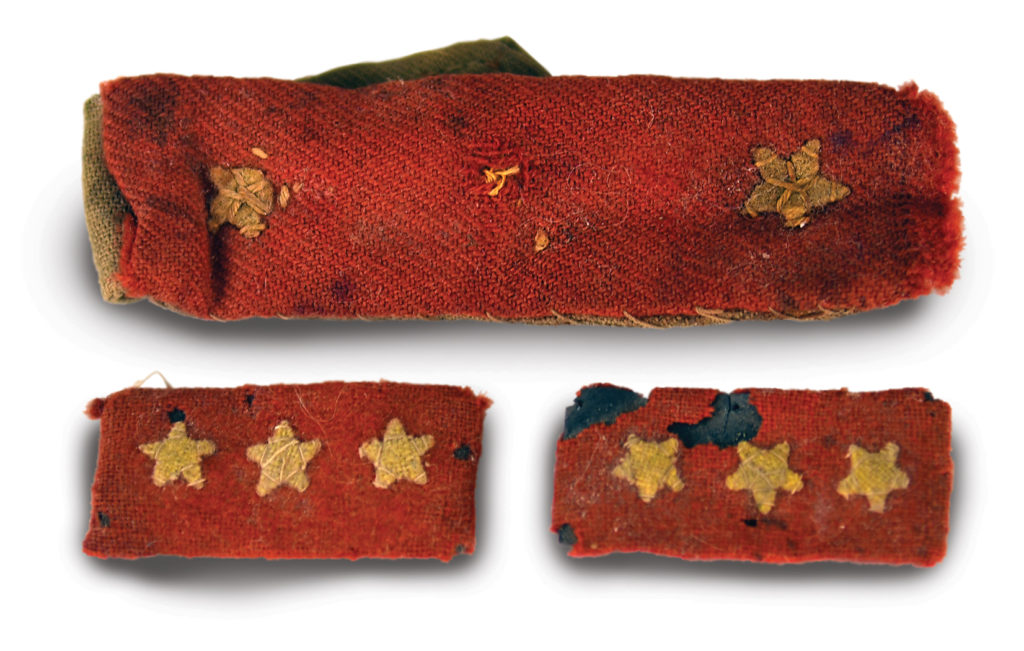
American combatants took to extracting gold teeth from Japanese dead. When Sledge made a move to follow suit, a comrade stopped him. “He was a good friend and a fine, genuine person whose sensitivity hadn’t been crushed out by the war,” a grateful Sledge recalled. “He was merely trying to help me retain some of mine.” Instead, Sledge removed and saved these Japanese Army enlisted soldier collar insignia. (Courtesy of an anonymous collector; photos by Beth Black Photography)
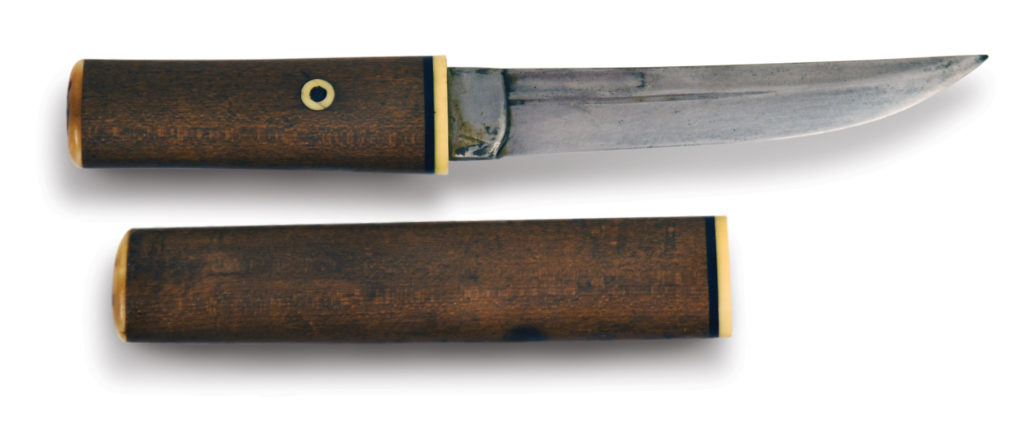
Among the most coveted battlefield prizes were hara-kiri knives, used in seppuku, ritual Japanese suicide. Sledge removed this one from a bunker on an island, Ngesebus, a few hundred yards north of Peleliu. “The men gloated over, compared, and often swapped their prizes,” Sledge wrote. “It was uncivilized, as is all war, and was carried out with that particular savagery that characterized the struggle between the Marines and the Japanese.” (Courtesy of an anonymous collector; photos by Beth Black Photography)
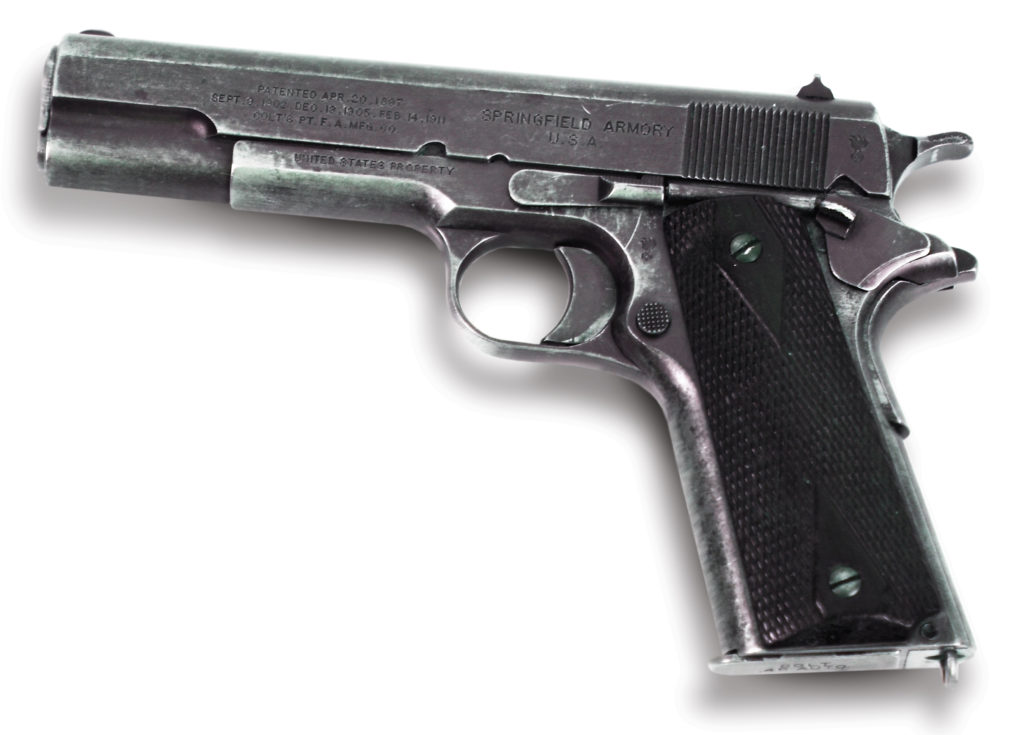
This M1911 .45-caliber pistol had belonged to Sledge’s father, a doctor who’d been in the army in World War I and shipped it to Sledge once he was overseas. Since men weren’t supposed to return home with their issued weapons, Sledge carried paperwork establishing that the pistol was his. Henry Sledge remembers his dad saying of that final voyage, “When I got down to the bottom of the gangplank I had to show the lieutenant something that proved the .45 was mine. I did, and I said, ‘Sir, this is my personal property,’ and he just waved me through.” (Courtesy of an anonymous collector; photos by Beth Black Photography)

